|
| |
This is one of the areas in which the recovery of the use of Galician has been most
significant, especially in television, radio, and cultural production. In press
there has also been a slight increase in the use of Galician and today we have a daily
newspaper enterely written in Galician.
|
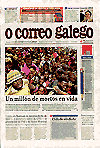 The Galician language has been making tentative inroads into the written press
through cultural and sporting supplements written in our language and, more recently, some
news items have also began to come out in some of the papers published in Galicia. The Galician language has been making tentative inroads into the written press
through cultural and sporting supplements written in our language and, more recently, some
news items have also began to come out in some of the papers published in Galicia.
In 1995 a daily newspaper entirely written in Galician, O Correo Galego, was launched.
Following on from this, in June 1995, the Galician Parliament passed a Green Paper whereby
both the Galician Government (Xunta de Galicia) and the Parliament itself would appeal to
the media to give out their news items in Galician.
Notwithstanding this scarcity of Galician in the written press, various studies have been
carried out dealing with this question and at the same time other publications are also
appearing which are proving to be of great use to journalists wanting to to carry out
their daily work in Galician. The birth of the Faculty of Information Sciences
(Journalism), which has so far produced two promotions of students, will have to fulfill a
decisive role in the training and qualification of our journalists of the future as
regards the normal usage of our language.
With respect to the non-daily press, Galician is only used in a minority of publications.
However, there has been a clear increase since 1977 and after several frustrated attempts
such as those of the journals Teima and Mancomún, in the number of weekly journals on
general subjects (A Nosa Terra) and on specialist subjects (Revista Galega de Educación,
A Trabe de Ouro, Cadernos da Lingua, Análise Empresarial, Irimia, Encrucillada, Luzes de
Galicia, Olisbos, Dorna, Revista de Literatura, Natureza Galega, Galicia Internacional...)
which are printed entirely in the Galician language.
|
|
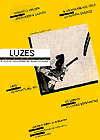
Galician is most used in specialist magazines.
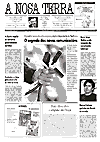
A Nosa Terra is a weekly newspaper having been published since
1977. |
|
Galician has not had a significant impact in these media, except for
very specific cases such as Radio Popular de Lugo and, especially, Radio Popular de Vigo.
The change in the political situation and the re-establishment of democracy have had
decisive effects on the levels of usage of the Galician language in the State-owned media.
For example, the centres for Galicia of Radio Nacional de España and Televisión
Española have started to broadcast programmes in the Galician language, although without
the same repercussions as with similar situations in other autonomous communities.
In 1984 this changed significantly when the Xunta de Galicia approved the creation of the
Compañía de Radio e Televisión de Galicia. The decision taken by the autonomous
administration to set up its own media, which would be both Galician and in Galician, was
of importance both to guarantee the presence in the media of the vernacular and to promote
its inclusion in the programmes of private companies.
In addition, the creation of the Radio Galega and the Televisión de Galicia has had great
effects on advertising since, with the channel being in Galician, advertisers and agencies
have begun to adapt both national and European slogans and campaigns to the Galician
language and to produce specific campaigns in Galician.
Since 25 July 1996, Galician Radio started to broadcast to the whole World via Internet,
while T.V.G., the Galician TV Channel, is currently in the process of setting up joint
agreements with the TV channels of the other Autonomous Communities in order to use
satellite transmission, thus securing its place in the marketplace in the dawn of cable
and digital T.V. systems.
The birth of the Galician television channel and Galician radio station have also had a
major impact on advertising because the advent of Galician in a hitherto virgin medium
suddenly became available to the advertisers and agencies who began to adapt their jingles
and advertising campaigns to our language, both at State and European levels, as well as
producing specific Galician-language campaigns.
|
|

The setting up of the Galician television channel and Galician
radio station by the Galician autonomous government has had a major impact on the language
normalization.

The Galician television is securing its place in the market
place in the dawn of cable and digital systems, satellite transmission and new
technologies.
|
 |
|
As far as broadcasting is concerned, we should stress the important
role played by the thirty or so local radio stations spread out all over the Galician
territory in the promotion and increased use of Galician inasmuch as almost all of their
programmming is produced in Galician.
|
|
Galician has found itself a place in various areas of cultural life
over recent decades. The publication of books in Galician has increased gradually since
1983; these publications are not limited to the field of literary creation but cover all
areas (historiography, teaching, economics, sociolinguistics, etc.); the number of
Galician publishers has increased (Galaxia, Xerais, Sotelo Blanco, Ir Indo, Edicións do
Castro, Vía Láctea, Edicións do Cumio, Fontel, Bahía, etc.) as well as that of
publishers which, though national, compete in the Galician market with their own
collections and/or translate works in various languages to Galician.
The creation of literary awards and competitions enriches publishing in Galician. The
local administration has established literary awards such as the "Cidade de
Lugo"and the "Celso Emilio Ferreiro" of the Vigo Town Council, the
"Eduardo Blanco Amor" for long novels which is promoted by a number of town
councils from all over Galicia, and the "Ricardo Carvalho Calero" for short
stories of the Ferrol Town Council. The publishing houses too hold contests: the
"Xerais" for novels, the "Merlín" for children's books and others;
also the "Ramón Cabanillas" and the "Alvaro Cunqueiro" for
playwriting, the "De catro a catro" for short stories, and the "Losada
Diéguez". This year the "Iacobeus" Award, of international scope and with
a generous prize, has been presented to the public: the winning works will be translated
to various European languages, thus gaining special prestige.
Drama is the sector of cultural production where greatest progress towards normalization
has been made: 99% of theatrical activity is in Galician. In 1986 the "Centro
Dramático Galego" was created receiving public funds and became the strongest
theatrical company in Galicia. Three years later the Centro Galego das Artes Escénicas e
Musicais (IGAEM) was born as a center of resources for both public and private companies.
A number of theatrical festivals, shows and contests are held in Galicia, such as the
"Mostra de Teatro Infantil Xeración Nós", in the Mancomunidade de Ferrol, the
"Festival Internacional de Teatro" in Ribadavia, the "Mostra de Teatro
Cómico-Festivo" in Cangas, etc.
 Cinema and video
production in Galicia is growing up slowly. Films "Sempre Xonxa",
"Continental" and "Urxa" as well as several short films and videos
have been followed by new productions (A metade da vida, Dame Lume, Dame Algo...) and even
foreinger films have been dubbed (O pico das viuvas, A lei da fronteira...) Cinema and video
production in Galicia is growing up slowly. Films "Sempre Xonxa",
"Continental" and "Urxa" as well as several short films and videos
have been followed by new productions (A metade da vida, Dame Lume, Dame Algo...) and even
foreinger films have been dubbed (O pico das viuvas, A lei da fronteira...)
The sector of Galician music is beginning to recover slowly after a period of certain
effervescence at the end of the sixties and beginning of the seventies. Milladoiro is
probably the group which has achieved the greatest fame both in Galicia and abroad. In
spite of the competition from multinational record-producers which promote English
language music almost exclusively, in Galicia we have at present groups and singers with
very different styles but with a wide following (Xocaloma, A Quenlla, María Manuel e
Miguel, Suso Vaamonde, Ana Kiro, Xoán Rubia, Uxía, Na Lua, Muxicas...) as well as
important new names (Carlos Núñez, Koros i Dansas, Matto Congrio, Luar na Lubre, etc.)
who are working for Galician music and in Galician.
One of the most original movements is the so-called "Rock Bravú" (Os
Diplomáticos, Os Túzaros, Papaqueixos, Skornaboys, Heredeiros da Crus, etc.) bands
singing in Galician and talking about the Galician reality, both rural and urban.
|
|

Milladoiro is the group which has achieved the greatest fame.

The publication of books in Galician has increased gradually
since 1983.
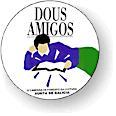
Two friends. In order to increase the number of readers in
Galician language campaigns of reading awakening are fostered.
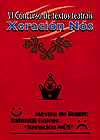
Drama is the sector of cultural production where greatest
progress towards normalization has been made. |
|